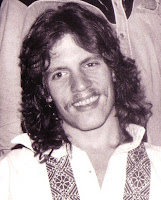 "Nighthawk" is one of the great names: Washington, DC DJ Bob Terry used it in the '60's when he had the best radio show in the city. John Hammond used it for his band the Screaming Nighthawks, a fixture in NY's Greenwich Village in 1965 or so, and a band that briefly boasted young Jimi Hendrix, fresh from the 101st Airborne, on lead guitar prior to his journeying to Great Britain.
"Nighthawk" is one of the great names: Washington, DC DJ Bob Terry used it in the '60's when he had the best radio show in the city. John Hammond used it for his band the Screaming Nighthawks, a fixture in NY's Greenwich Village in 1965 or so, and a band that briefly boasted young Jimi Hendrix, fresh from the 101st Airborne, on lead guitar prior to his journeying to Great Britain. My friend Mark Wenner has called his fine band the Nighthawks for over forty years now, and they're still going strong, I'm pleased to report.
But really, when the rubber hits the road, when push comes to shove, when it's time to fish or cut bait, there is only one original Nighthawk. Robert Nighthawk (or Night Hawk), the prowling Nighthawk, the legendary blues guitarist from Louisiana, one of the greats of Chicago blues and also an amazingly inventive slide guitar player with a beautiful touch.
Tomorrow, November 30th would have been Nighthawk's hundred- and- first birthday. Born in 1909, he died of heart failure (don't we all?) on November 5th, 1967, too early for the inevitable fame that accompanied white crossover adulation.
 |
| Robert McCullum with his brother on harmonica |
His real name was Robert Lee McCullum and although he began as a harmonica player, he was a "go-to" guitarist as early as 1937, playing under the name Robert Lee McCoy, and recording for RCA with the first Sonny Boy, John Lee Williamson. By 1950 he was calling himself Robert Nighthawk, named after a popular recording of his.
 |
| Nighthawk in the '40's |
While slide players like Elmore James re-tuned the guitar to an open tuning, like D, for instance, or, as in Muddy's case, open G, Nighthawk tended to play in the regular EADGBE tuning, dampening strings as needed and fretting chords with his free fingers, alternating with his elegant single note runs.
 |
| Robert with Houston Stackhouse and Peck Curtis behind his classic "King Biscuit Enterainers" bass drum |
Nighthawk's standard, Anna Lee, got recorded over and over and each version is a gem. His Maggie Campbell and Kansas City are must- haves for any aspiring blues musician. The recordings that he made with Big Walter Horton in 1964 for the Swedish aficionados, released under the name An Offer You Can't Refuse, are a virtual Chicago blues guitar textbook: clean, simple, unassuming and perfect.
You may want to check his recordings out here, but if I may, let me recommend a few for you.
1. Bricks in My Pillow (Delmark)- Nighthawk's singles on United and States- definitive!
2. Masters of Modern Blues (Testament) - Half Nighthawk, the other Houston Stackhouse. Not only do you get to compare both men, but Peck Curtis' drumming alone is worth the price of the recordings.
3. Live on Maxwell Street, 1964 (Bullseye)- amazing recordings done as part of a film documentery.
4. Bluebird Recordings 1937- 1938 (RCA) - the great early stuff with John Lee Williamson on harmonica and Big Joe Williams on guitar, not to mention virtuosic mandolin from Yank Rachell. Excellent sound.
5. The Original Sonny Boy Williamson, volume 1 (JSP?- not sure)- a very inexpensive 4- disc set of the Bluebird recordings that include a lot of great back- up from Nighthawk (as Robert Lee McCoy). Must have anyway because of Sonny Boy.
6. I Blueskvarter• Chicago, 1964, volume 1 (Jefferson, import) - this complilation has the speed- corrected, beautifully mastered Big Walter/ Nighthawk recordings. From the same session released earlier as An Offer You Can't Refuse.
All of the above are available on Amazon as well as Frank Scott's Roots and Rhythm site, a wonderful resource for blues and roots music based in the San Francisco Bay area.


























